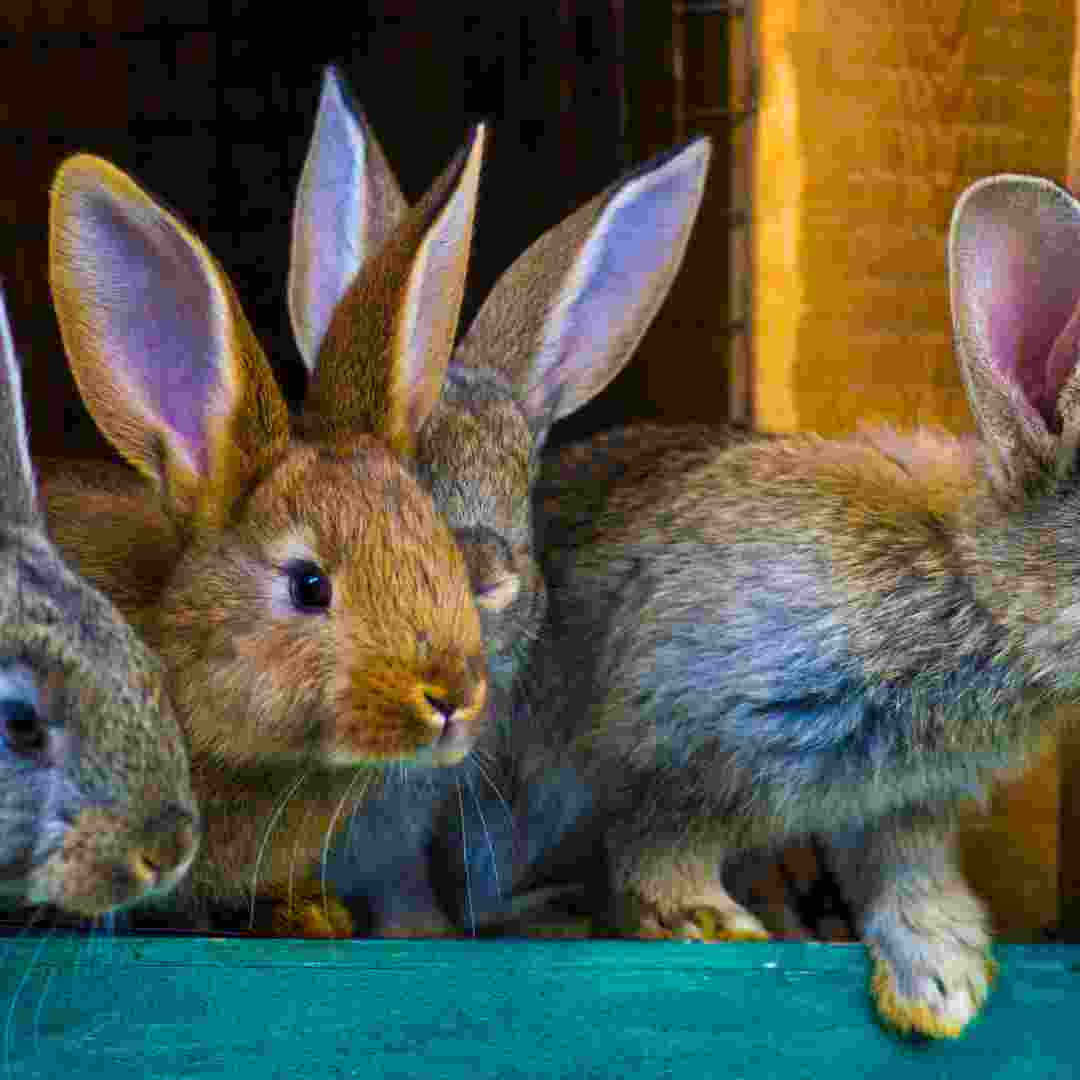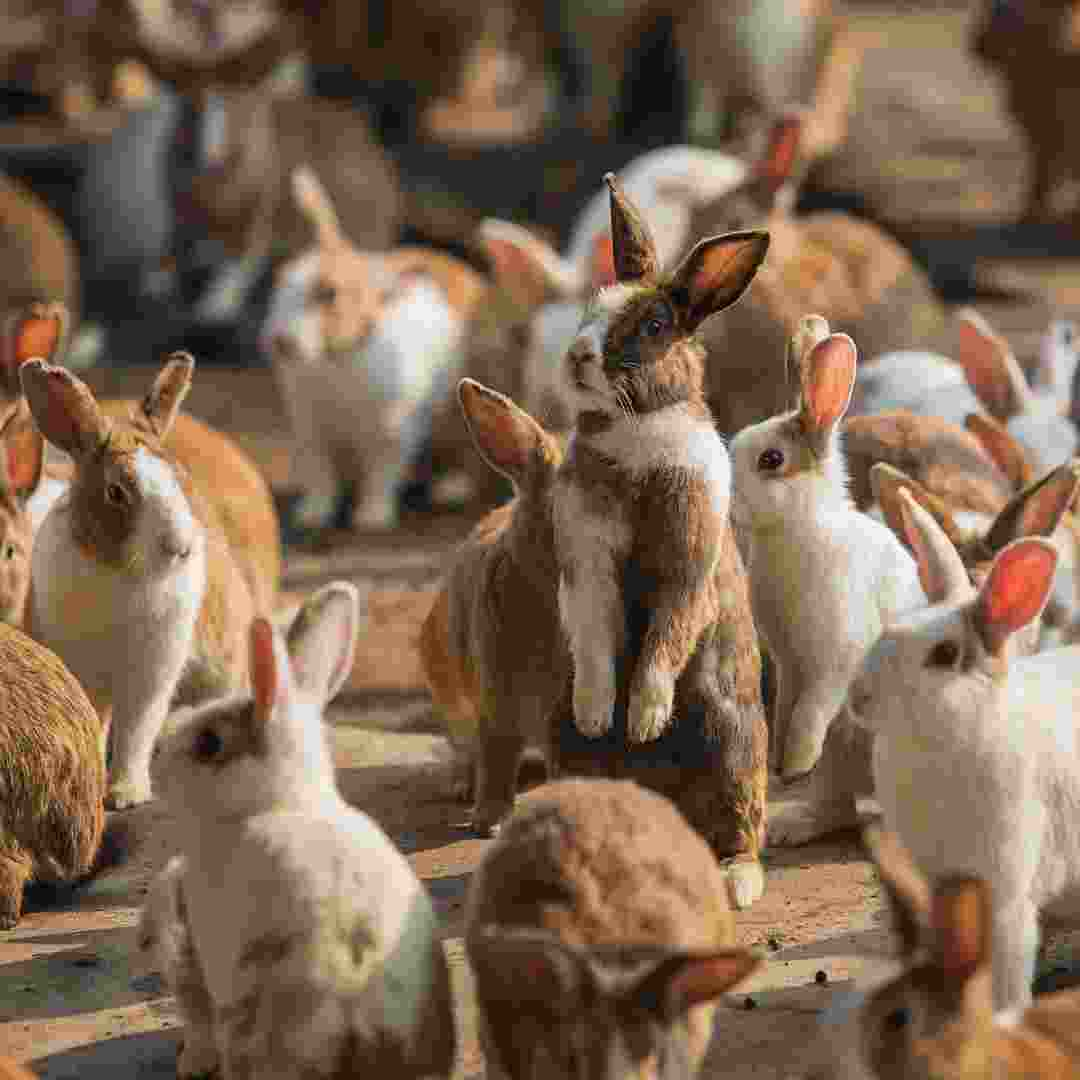Contents Table
Introduction
The Environmental Impact of Australia's Rabbit Population
Exploring Australian Rabbit Introduction History
Australian Rabbit Control Pros and Cons
Australian Rabbit Population Management with Rabbit-Proof Fencing
Diseases' Effects on Australia's Rabbit Population
Q&A
Conclusion
Introduction
One of Australia's most common creatures is the rabbit. One of the most common mammals in Australia, rabbits number around 200 million. All states and territories have rabbits, which can be a major agricultural problem. They can destroy crops and native plants and spread illness. Rabbits feed numerous native carnivores in Australia, despite their harmful affects.
The Environmental Impact of Australia's Rabbit Population
Australia's rabbit population has harmed the ecosystem. Mid-19th-century rabbits were brought to Australia for hunting and farming. However, rabbits swiftly multiplied and travelled over the continent, increasing their population dramatically.
In Australia, rabbits are a major environmental pest. They eat much of vegetation, causing soil erosion and native plant and animal extinction. Rabbits compete with native species for food and habitat, reducing biodiversity. They also destroy crops, costing farmers money.
The Australian government has taken steps to control rabbits. Baiting, trapping, shooting, and introducing the rabbit-killing calicivirus are examples. Despite these measures, rabbits remain an issue in many Australian regions.
In conclusion, Australia's rabbit population has harmed the environment. Several government population control initiatives have failed. All Australians must be aware of rabbits' environmental implications and take actions to minimise their numbers.
Exploring Australian Rabbit Introduction History
Rabbits have a complicated history in Australia. European settlers brought rabbits to Australia in the early 1800s. Rabbits were brought to Australia for food, fur, and sport.
Rabbits were first introduced in Victoria in 1859 and spread throughout the continent by the 1880s. Rabbits fought with native species for food and habitat, damaging the ecology. The destruction of crops and meadows caused severe economic harm.
The Australian government began rabbit control in the early 1900s. They implemented several precautions, including the 1901 Rabbit-Proof Fence. The rabbit-proof barrier reduced rabbit populations in some locations.
Australian authorities introduced the myxomatosis virus in the 1950s to control rabbit populations. The virus reduced rabbit populations but also killed native animals.
The Australian government introduced the rabbit-targeting calicivirus in the 1970s. The virus reduced rabbit populations and had less side effects than myxomatosis.
The Australian government still controls rabbits. The Rabbit-Proof Fence, myxomatosis virus, and calicivirus are among their efforts. Other tactics include capturing, shooting, and poisoning.
The introduction of rabbits to Australia has affected the ecology and economy. Despite government efforts to control rabbits, their devastation remains.
Australian Rabbit Control Pros and Cons
Rabbit control in Australia is divisive. Rabbits can harm crops and native vegetation, making them pests. On the other side, some Australians love rabbits and worry about control methods. This article discusses Australian rabbit control pros and downsides.
Pros
The main benefit of rabbit control in Australia is agricultural and native plant protection. Rabbits eat lots of crops and feed on natural plants, damaging agricultural land. Farmers can preserve crops and natural plants by controlling rabbits. Controlling rabbit populations can also decrease the spread of diseases like myxomatosis.
Cons
The biggest issue with Australian rabbit control is unexpected effects. Control tactics like poisoning can harm native predators. Some control techniques can be harsh to animals, which worries some people. Finally, some control tactics can damage the ecology over time, which worries some individuals.
Conclusion
Australian rabbit control is divisive. Controlling rabbits can safeguard crops and natural plants. Some worry about unforeseen outcomes including animal mistreatment and long-term environmental impact. Before taking rabbit control methods, evaluate all the potential effects.
Australian Rabbit Population Management with Rabbit-Proof Fencing
Australia controls rabbit populations with rabbit-proof fencing. Exclusion barrier keeps rabbits out. Most fencing is 1.2–1.8 metres high and made of galvanised steel mesh. Made to be hard for rabbits to climb or dig under.
Rabbit-proof fencing protects crops, natural plants, and other places from rabbit harm. Australian rabbits harm farms and pastures. They compete with natural creatures for food and habitat and spread illnesses.
Rabbit-proof fencing works well to keep rabbits out. It's cheap and simple to install. Meshed fencing is normally placed in a continuous line at least 15 cm underground. This keeps rabbits from tunnelling under the fence.
Fencing against rabbits is not a lasting solution. Regularly inspect the barrier to ensure rabbits cannot pass through. Rabbit populations should also be controlled by baiting and trapping.
Rabbit-proof fencing helps manage Australian rabbit populations. It effectively deters rabbits and protects agricultural land, native vegetation, and other regions from rabbit damage.
Diseases' Effects on Australia's Rabbit Population
Rabbits are crucial to Australia's fauna, but their numbers has been dropping for several reasons. Diseases' impact on rabbit populations is severe. The impacts of rabbit infections on the Australian population and how to mitigate them will be discussed in this article.
Australian rabbits can contract myxomatosis, RHD, and calicivirus. This viral illness is carried by mosquitoes and other biting insects. It can be lethal and causes severe eye, ear, and vaginal edoema. Infected rabbits or their secretions disseminate RHD, a highly contagious viral illness. It causes fever, drowsiness, and nose-and-mouth bleeding and can kill. Calicivirus is transferred via rabbits or their secretions. It causes fever, drowsiness, and nose-and-mouth bleeding and can kill.
The Australian rabbit population has suffered greatly from these illnesses. Since 1950, myxomatosis has killed millions of rabbits. RHD has reduced rabbit populations since its 1995 discovery. Since its 1996 introduction, calicivirus has killed 70-90% of rabbits.
There are several ways to reduce the impact of these diseases on rabbits. Rabbits can be protected from myxomatosis and RHD using vaccines. Biosecurity measures like restricting wild-domestic rabbit contact can also prevent disease spread. Finally, calicivirus treatment and vaccine research may lessen its influence on rabbit populations.
Finally, illnesses have greatly affected Australia's rabbit population. To reduce population reductions from myxomatosis, RHD, and calicivirus, steps must be adopted. Vaccines, biosecurity, and research into new therapies and vaccines can minimise rabbit disease cases.

Q&A
1. How many rabbits inhabit Australia?
Australia may have 200 million wild rabbits.
2. What do rabbits do to the environment?
Rabbits are pests in Australia because they overgraze vegetation, compete with native animals for food and habitat, and carry disease.
3. How did rabbits reach Australia?
Rabbits were brought to Australia in the mid-1800s for hunting and eating.
4. What's the rabbit control strategy?
Baiting, trapping, and shooting are among the Australian government's rabbit management methods.
5. Are there any Australian rabbit species endangered?
Brush-tailed Rabbits, Western Barred Bandicoots, and Northern Hares are endangered in Australia.
Conclusion
Unfortunately, the absence of solid data makes it difficult to determine the number of rabbits in Australia. Australia is estimated to have 10–20 million rabbits, with some estimates reaching 200 million. This many rabbits have harmed Australia's environment and agriculture.
